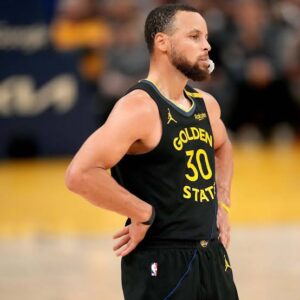🏉 From Rugby Legend to Flag Football Pioneer: Quade Cooper’s Bold New Path

🏉 From Rugby Legend to Flag Football Pioneer: Quade Cooper’s Bold New Path
At 37 years old, former Australian international Quade Cooper has once again made waves—in a different sport. After a storied rugby career, Cooper is eyeing a transition to flag football, with sights set on representing Australia at the 2028 Los Angeles Olympics, where the sport debuts .
A Viral Moment Sparks a New Dream
Cooper will forever be remembered for one dazzling moment: a one-handed, overhead rugby pass that quickly went viral. That viral clip didn’t just highlight his skill—it opened a door to a new athletic journey. He’s now exploring a switch to flag football, a non-contact, fast-paced cousin of American football. Cooper has already participated in a tournament in Los Angeles and is considering going full-time in this rapidly growing sport .
Why Flag Football? Minimizing Risk, Maximizing Opportunity
Several key factors make flag football an appealing choice for Cooper:
Lower injury risk: As a non-contact sport, flag football reduces the toll on the body—crunchingly important for athletes in their late 30s.
Strategic depth: Cooper highlighted the sport’s “strategic detail,” emphasizing mental agility and decision-making—skills he honed as a fly‑half .
Extended career longevity: Unlike contact rugby, this switch could let him compete at a high level, possibly for years to come.
These elements align with Cooper’s goals: staying competitive while minimizing wear and tear on his body.
Citizenship Cleared the Way
Previously barred from Olympic eligibility due to citizenship issues, Quade Cooper remedied that in 2022, becoming an Australian citizen. This move reopened his Olympic dream, and with flag football now a part of the program for LA 2028, the timing couldn’t be better .
The Olympic Dream
Though traditionally associated with rugby union, Cooper now envisions himself as one of Australia’s flag football quarterbacks in LA. He’s already taken part in a tournament in Los Angeles, generating interest from Flag Football Australia. The pivot makes perfect sense given that flag football will debut at the upcoming Olympics .
Beyond Personal Ambition: Advocating Safer Sport for Kids
Cooper’s transition also carries a deeper message: reducing concussion risk for younger players. He’s keen to promote flag football as a safer alternative to full-contact rugby for children—emphasizing fun, fitness, and mental engagement without the physical danger .
Business Venture Off the Field
Off the pitch, Cooper has also become an investor in HYRO, a hydration brand co-founded with NRL star Daly Cherry-Evans. This business move indicates his proactive approach to building a diversified career after rugby .
—
Why This Story Is Trending
1. Unusual career shift: It’s rare to see a top‑level rugby talent pivot to a new, emerging sport mid‑career.
2. Olympic context: The upcoming inclusion of flag football in LA 2028 adds legitimacy and excitement to Cooper’s path.
3. Health-conscious narrative: His message about safety resonates in a time of growing concussion awareness in contact sports.
4. Viral social impact: A single highlight reel moment catalyzed a new opportunity—capturing the power of virality in modern sports.
—
A New Chapter for an Old Pro
What lies ahead for Cooper depends on multiple factors:
Performance in flag football circuits: Excelling in tournaments and catching the attention of selectors.
Support from national bodies: Engagement from Flag Football Australia and Olympic committees will be key.
A continued balance: Managing physical health, Olympic training, and business ventures.
Whatever happens, Cooper’s transformation signals the rise of flag football’s global reach—and athletes seeking new chapters beyond traditional rugby careers.
—
Final Thoughts
Quade Cooper’s journey from Wallaby Red to potential Olympic flag footy star embodies adaptability, vision, and resilience. He’s challenging norms by forging a fresh athletic identity while spotlighting safer sports pathways for younger generations. As momentum builds toward LA 2028, his story is unmistakably the second biggest rugby-related narrative today—a unique blend of past glory and future ambition.
—




